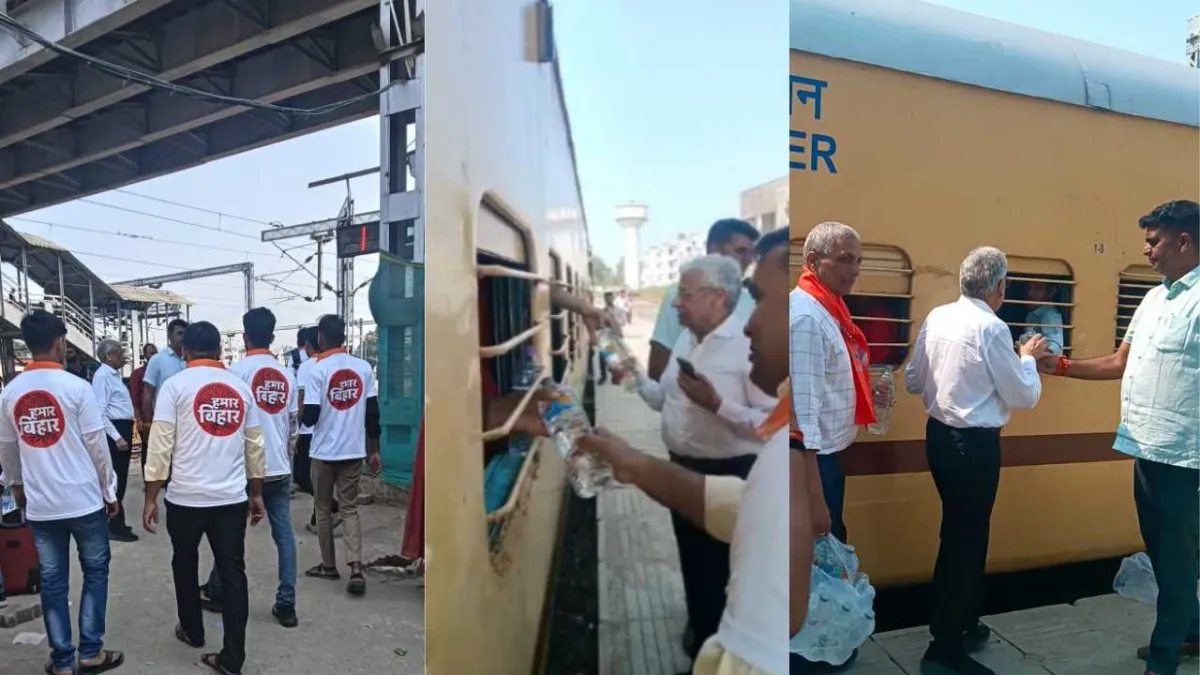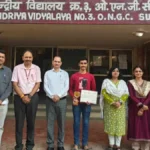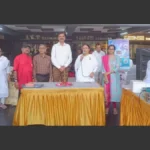Surat. Heavy crowds of passengers are being observed at Surat and Udhna railway stations in view of Diwali and Chhath Mahaparva. Passengers traveling on trains to Bihar, Uttar Pradesh, and Jharkhand are having to stand in line for hours.
The station premises have become packed with passengers due to the festive season. During this time, several voluntary organizations and social groups, including Saket, are playing an active role in reducing the difficulties faced by passengers.
BJP workers in Surat also distributed drinking water to passengers on trains bound for Bihar and Uttar Pradesh, providing relief to the travelers.
The railway administration has deployed additional staff to maintain security and order, so that traffic remains smooth despite the growing crowds.
Surat railway station
Surat railway station is a major railway hub in the city of Surat, Gujarat, India, serving as a crucial junction on the busy Mumbai-Delhi railway route. Historically, the station was developed during the British colonial era as part of the expansion of the Bombay, Baroda and Central India Railway (BB&CI). Today, it is undergoing significant redevelopment to transform it into a modern, world-class terminal while preserving its heritage elements.
Udhna railway station
Udhna Railway Station is a major junction station located in Surat, Gujarat, India, on the Mumbai–Ahmedabad main line. It was established during the British colonial era in the late 19th century as part of the expansion of the Bombay, Baroda and Central India Railway (BB&CI). The station serves as a critical hub for both passenger and freight traffic, connecting Surat to other major cities in the region.
Diwali
Diwali, also known as the Festival of Lights, is a major religious and cultural celebration originating in the Indian subcontinent, primarily observed by Hindus, Sikhs, and Jains. Its history is rooted in ancient legends, such as the return of Lord Rama to his kingdom after 14 years of exile. Today, it symbolizes the spiritual victory of light over darkness and good over evil, marked by the lighting of lamps, fireworks, family gatherings, and prayers.
Chhath Mahaparva
Chhath Mahaparva is an ancient Hindu festival dedicated to the Sun God (Surya) and Chhathi Maiya, primarily celebrated in the Indian states of Bihar and Jharkhand, as well as in Nepal. Its history is rooted in the Vedic texts, and it is believed to date back to the early civilizations that worshipped the sun as a source of life and energy. The festival involves rigorous rituals, including fasting and offering prayers to the rising and setting sun, to express gratitude and seek blessings for well-being and prosperity.
Bihar
Bihar is a state in eastern India with a rich historical and cultural heritage, as it was the center of powerful ancient empires like the Magadha, which gave rise to both Buddhism and Jainism. It is home to significant religious sites such as Bodh Gaya, where the Buddha attained enlightenment, and was also the location of the ancient world’s first republic in Vaishali. The region’s history as a major seat of learning is exemplified by the ruins of Nalanda, which was one of the world’s first residential universities.
Uttar Pradesh
Uttar Pradesh is a state in northern India, historically known as the heartland of ancient and medieval Indian culture. It is home to iconic landmarks such as the Taj Mahal in Agra and the holy cities of Varanasi and Ayodhya, which are central to Hinduism. The region was a significant center for the Mughal Empire and the Indian independence movement.
Jharkhand
Jharkhand is a state in eastern India, formed on November 15, 2000, after a long tribal movement for autonomy from the state of Bihar. The region is historically significant for its rich mineral resources and as the homeland of numerous indigenous (Adivasi) communities. It is known for its lush forests, waterfalls, and vibrant tribal culture and festivals.
Saket
Saket is a prominent residential and commercial district in South Delhi, India, which has developed significantly in recent decades. The area is historically significant for housing the ancient Ashokan Rock Edict, dating back to the 3rd century BCE, which reflects Emperor Ashoka’s teachings. Today, it is also well-known for the modern Select Citywalk mall, representing its transformation into a major urban hub.






